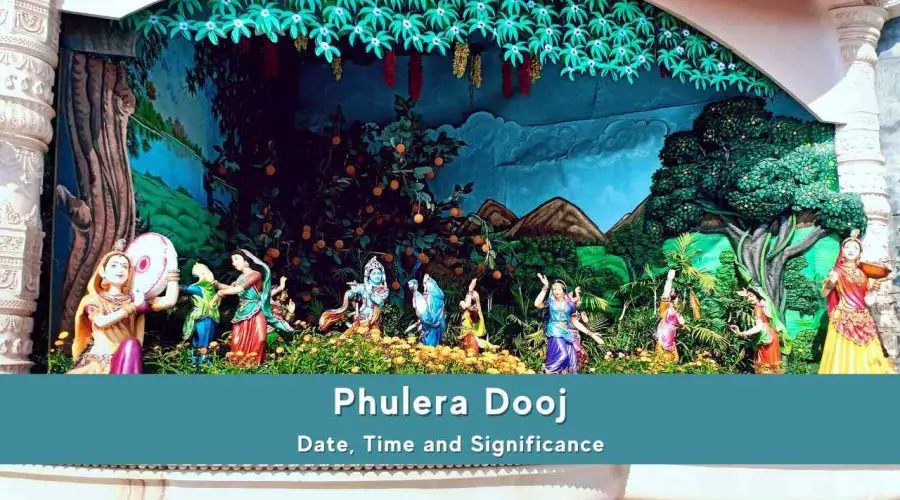Phulera Dooj 2024: Know the Date, Time, Rituals, and Significance
According to the traditional Hindu lunar calendar, Phulera Duja, a rite connected to the Holi festival, is held on the second day (dwitiya) of the Shukla Paksha (waxing phase of the moon) of Phalgun month (February–March), primarily in North India.
The date for Phulera Dooj 2024 is March 12. On this day, specific rites are performed at the Lord Krishna temples in Mathura and Vrindavan. In some temples, Lord Krishna’s visage has a small amount of paint on it. There is no need to search for a muhurat because, according to astrologers, the whole day is lucky.
According to legend, this day marked the union of Krishna and Radha.
Phulera Dooj 2024 Date
12 March, Tuesday, 2024
Phulera Dooj The Entire Day is Auspicious
Astrologers and pandits are not required to be consulted in some regions of North India because it is thought that the entire day is lucky. Some groups choose this day to perform marriages, including the infamous practise of child marriages, as a result of this singular occurrence.
Without waiting for a lucky moment, you can start a new business, get married, buy a new house, buy a new car, and more on this day.
People who are having trouble finding a good time to get married can do so that day.
How is Phulera Dooj Celebrations?
- On this day, the Holi festival begins in the temples of Vrindavan, Mathura, and Braj.
- In the temples of Vrindavan and Mathura, Radha Krishna’s daily puja with flowers and colours begins.
- Braj temples are adorned with a variety of flowers.
On that day, Abeer and Gulal are served to Bhagavan Sri Krishna. - A special rangoli is made in front of homes on the day of the rural festival known as Phulera Dooj. Flowers are used to create rangoli.
- Radha and Krishna are given homemade treats as gifts. After that, it is distributed to family, friends, and neighbors.
- On this day, flowers are used to adorn the murtis in the puja room.
Phulera Dooj 2024 Significance
Phulera Dooj also designates the day on which the Lordships fully embrace the Holi spirit. While Basant Panchami gives way to Holi in Braj, the main celebrations get underway today, especially at the Radhavallabh Temple in Vrindavan.
Radhavallabh always wears a white “poshak” on this day. His white “phenta” (cummerbund/girdle) is tied around his waist, signifying that he is prepared for “the big event” – the five-day Holi celebration from Rangbharani Ekadashi to Phalgun Purnima.
After that, His daily “shringaar” includes the “phenta” and “gulcha gulaal” (dab of colour on the cheeks and chin) on a regular basis. Interestingly, men tie a similar girdle with a “gulal” pouch attached around their waists during the Lathmaar Holi festivities performed in Barsana and Nandagaon. For their Holi play, the “phenta” and enormous turbans serve as a sort of dress code.

